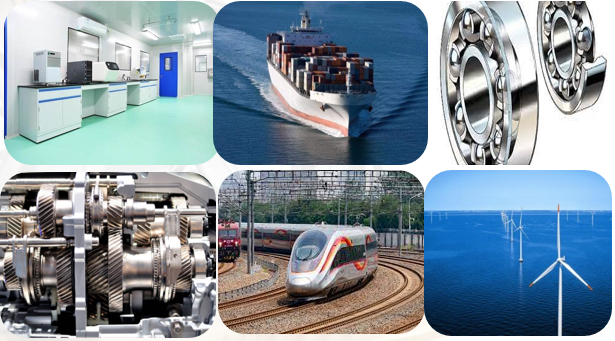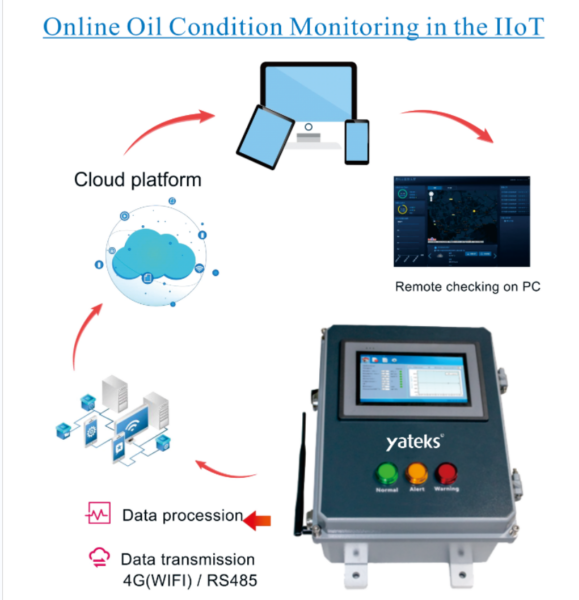In today’s fast-paced industrial world, ensuring the smooth operation of machinery is a crucial priority. Among the numerous factors governing machinery efficiency and lifespan, the condition of the lubricating oil plays a pivotal role. To proactively monitor and maintain the health of your machinery, integrating advanced oil quality sensors, oil condition sensors, and oil analysis equipment into your maintenance program is essential. In this blog, we will delve into the benefits and functionalities of these cutting-edge technologies, ultimately empowering businesses to take proactive measures to enhance their lubricant management.
1.Understanding the Importance of Oil Quality Sensors
Oil quality sensors are innovative devices that provide real-time analysis of lubricating oil, ensuring its quality remains at optimal levels. These sensors monitor essential parameters such as viscosity, insolubles, water content, and acid number, giving valuable insights into wear and contamination levels. By promptly detecting any deviations from normal levels, oil quality sensors help prevent severe damage to machinery and minimize costly repair and maintenance downtime. Implementing these sensors enables businesses to make informed decisions regarding oil changes, allowing for efficient maintenance practices and substantial cost savings.

2. The Vital Role of Oil Condition Sensors
Oil condition sensors complement the functionalities of oil quality sensors, providing a comprehensive understanding of the lubricant’s overall health. These sensors continuously measure crucial parameters, such as oxidation, additive depletion, and base number, to evaluate the oil’s remaining useful life. By monitoring the condition of the oil in real-time, businesses can proactively plan oil changes, avoiding unnecessary replacements and optimizing their machinery’s performance. With predictive analysis, costly breakdowns and unscheduled maintenance can be avoided, resulting in heightened efficiency and increased productivity.
3. Revolutionizing Lubricant Management with Oil Analysis Equipment
To further enhance lubricant management, oil analysis equipment takes oil monitoring to the next level. With its advanced capabilities, this equipment provides a comprehensive analysis of the lubricant, addressing concerns beyond what individual sensors can capture. Oil analysis equipment measures critical factors like particle count, elemental analysis, and wear debris, enabling businesses to detect contamination sources, identify potential mechanical failures, and assess oil performance accurately. By leveraging this technology within routine maintenance practices, businesses can optimize equipment performance, extend oil drain intervals, and improve operational reliability.
4. The Benefits of Integrated Monitoring Solutions
Combining oil quality sensors, oil condition sensors, and oil analysis equipment offers a fully integrated solution to attain optimal lubrication management. The continuous monitoring and analysis provided by these technologies support proactive maintenance practices, minimizing unplanned maintenance, reducing downtime, and maximizing machinery lifespan. By harnessing the power of these advanced solutions, businesses can accurately schedule maintenance intervals, streamline resource allocation, and better meet production demands. Consequently, operational costs are reduced, profitability is enhanced, and businesses gain a competitive edge within their industries.
In an era where operational efficiency and machine health are paramount, oil quality sensors, oil condition sensors, and oil analysis equipment emerge as indispensable tools for successful lubricating oil management. By harnessing the power of these cutting-edge technologies, businesses can proactively monitor oil quality, detect potential issues, and take prompt action to avoid costly machinery failures and downtime. Investing in these integrated monitoring solutions ultimately empowers businesses to optimize their lubrication management, reduce operational costs, and ensure continuous production, all while gaining a competitive advantage in today’s dynamic industrial landscape.


